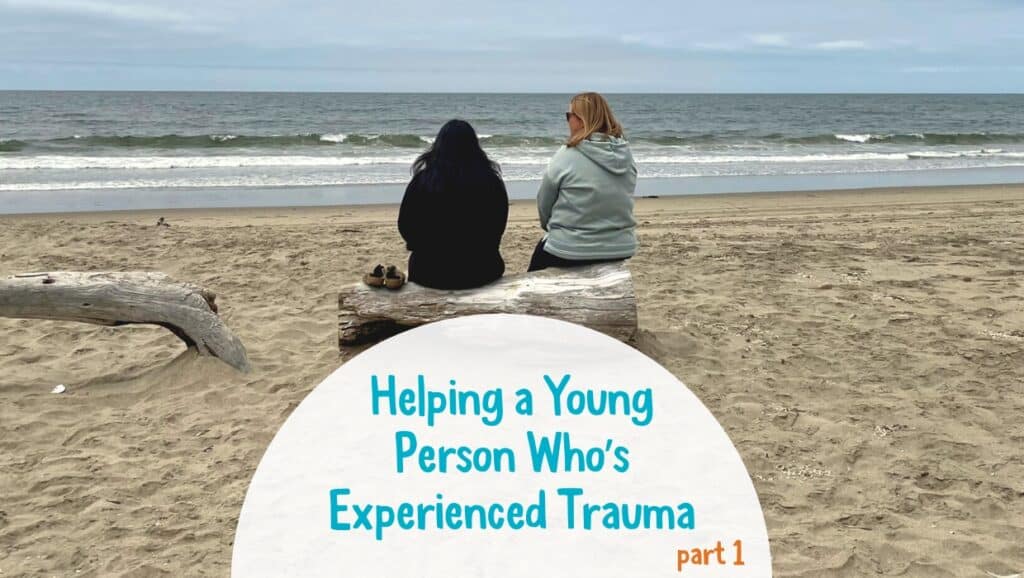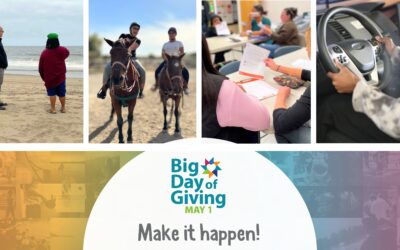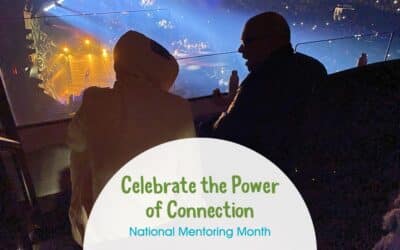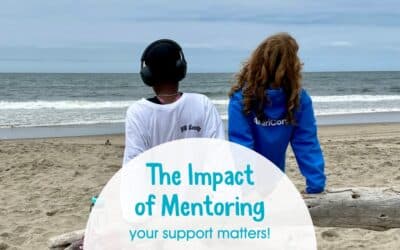Helping a Young Person Who’s Experienced Trauma – Part 1

Being trauma-informed means understanding how trauma can impact people and recognizing or responding to the signs or symptoms caused by such stressors. As a trauma-informed organization, Aging UP’s mentors, staff, board members and other key volunteers undergo training. The first step is to understand what trauma is, specifically childhood trauma, and how it can show up. This two-part series by author, speaker, and consultant Lisa Frederiksen simplifies research and offers a clear overview.
The term “childhood trauma” refers to the effects—to the brain, nervous system, frame of mind and behavior—of extremely stressful event(s) that occur during childhood and overwhelm a child’s coping ability. Research shows that in-utero infants can also experience trauma if stressful events happen to the person carrying that infant. Examples of trauma include physical, emotional or sexual abuse; neglect; separation from loved ones; or unpredictable parental behaviors, such as those which occur with substance use or other mental disorders, or if the parent has unprocessed trauma of their own. For many children, entering foster care is another traumatic event.
How Does Trauma Work?
When a stressful event (big or small, singular or repeatedly) occurs, the child’s brain responds with a survival stress response, including: fight (confronting the threat directly), flight (escaping from the threat), freeze (becoming immobile), and fawn (appeasing the threat by people-pleasing behaviors). . These stress responses help a child cope with the overwhelming situation and adapt to the circumstances they have no control over. Stress response is automatic and initiated from our most primitive “lizard” brain. Therefore, it doesn’t involve the higher reasoning portion of the brain (not yet formed in childhood).
Trauma Triggers and Resulting Behaviors
When a child experiences trauma over time, their body adapts as if on autopilot to do whatever it takes to cope/stay safe (fight, flight, freeze or fawn). This adaptation becomes their stress response to their trauma “triggers,” things that remind them (often subconsciously) of the original traumatic event. Triggers often occur in entirely different settings and remind the child (or adult) of the original event that threatened their safety or nervous system.
Trauma triggers can be a sound, sight, touch, smell, feeling, place, someone’s expression, posture or tone of voice. The trigger drops the child right back into their need to stay safe in the way(s) that worked for them before, without thought. The child is not able to reason or consider the consequences or the effects of their behaviors on others. Triggers can seem unrelated to the child’s traumatic early life events but can be connected in a variety of ways. Homework, trying to fit in with peers, and angst about their family of origin can also move them into the same stress response behavior they first developed.
A young person might exhibit distrust, disobedience, disassociation, aggression, angry outbursts, willful non-listening, or defiance of the adult figure. Think of these behaviors as reflexes or automatic reactions. They are not thought out or planned.
And It’s Not Just Behaviors
Repeated activation of the stress response can also cause a child to experience a host of physical and emotional ailments. This is because stress hormones, like cortisol and adrenaline, trigger the physical changes needed to fight, flight, freeze or fawn. This can result in migraines, headaches, gut problems, acne, anxiety, self-destructive behaviors (cutting, eating disorders, substance use disorder, hair pulling), suicidal ideations, depression, and sleep difficulties, as just some examples. These ailments can be another sign a child has experienced or is experiencing trauma.
Stay tuned for tips on handling troubling behaviors coming soon in Helping a Young Person Who’s Experienced Trauma – Part 2.




